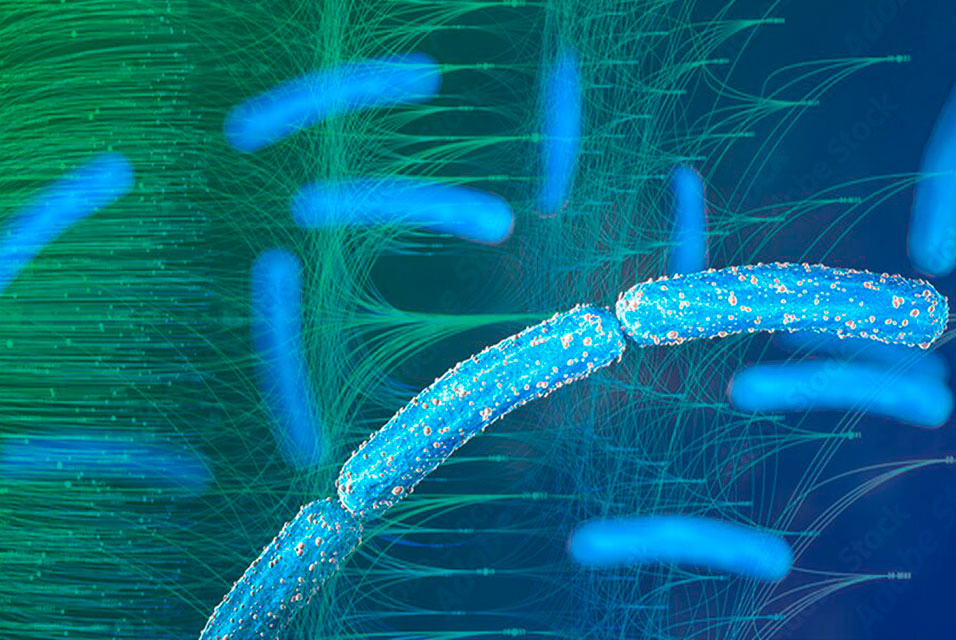CAMBRIDGE.- The ways in which bacteria infect cells are important for understanding host-pathogen interactions. The knowledge also opens up a world of practical applications.
For example, it can support the design of new antibacterials or vaccines. In the case of soil or marine bacteria, it can create strategies for rebalancing natural ecosystems.
"I've always been fascinated by bacteria and how these tiny microbes have such a huge impact on us and our world," said Vivian Monzon, Ph.D. student in the Bateman group at
EMBL-EBI. "I'm particularly interested in the nitty gritty of how bacteria infect cells."
In her recent work, Monzon has been using machine learning to explore how bacteria interact with their environment. By analyzing data from the UniProt database and using AlphaFold, she has been trying to fill in the gaps in our knowledge in this area.
Binding-the first step of the interaction
Fibrillar adhesins are proteins located on the bacterial cell surface, which mediate interactions with the environment, e.g., with host cells or other bacteria. These proteins usually have a stalk, which helps them cross the bacterial cell surface and be projected closer to their targets—regardless of what they are trying to bind to. Fibrillar adhesins are essential for bacterium-host interactions, but they also evolve quickly, which makes them difficult to study.
"As is often the case with computational experiments, one of the challenges was to identify a relevant dataset from the wealth of data available," explained Monzon. "We decided to look at two types of bacteria. The first are Firmicutes species— some of the most well-studied bacteria out there; they can live in the human gut, and play a role in keeping the colon healthy. The second were Actinobacteria species, which are widely distributed in terrestrial and aquatic ecosystems.
"Excitingly, our analysis yielded over 6,500 fibrillar adhesins, many of which had never been seen before. This goes to show there is so much we still don't know about the binding process, which is so essential in the bacterial world."
Beyond scientific curiosity
The work goes beyond simple curiosity. By understanding how bacteria interact with biotic or abiotic surfaces, researchers can start to explore how drugs can be used to target these interactions, or whether the bacteria living in our bodies or our environments can be changed. This approach could allow researchers to improve the health of gut microbiomes—the bacterial community living in a patient's gut. Going beyond healthcare, this information could help to return a marine or soil microbiome to its original state after perturbation by pollution or other agents.
Work like Monzon's is helping researchers fill in the gaps in their understanding of the fascinating world of bacteria.
As part of its new microbial ecosystems transversal theme, EMBL is interested in pioneering ways to tap into the world's vast microbial diversity and understand the underlying molecular mechanisms behind how microbes interact with their host, other microbes and their environment.
Similarly, this kind of closeup on bacterial interactions is essential for infection biology, to help researchers map what molecular mechanisms help pathogens find, invade host cells, and then survive and proliferate within them. Despite decades of study, the mechanisms of pathogen adhesion remain elusive. As part of its infection biology transversal theme, EMBL aims to use cutting-edge technologies to systematically map and model host-pathogen interfaces at the atomic, molecular, and tissue levels. This can enrich the understanding scientists have of infection processes and how to stop them or slow them down.
Monzon's project is just one of the many EMBL initiatives looking into the molecular mechanisms of bacteria. Anyone working on bacterial adhesive structures can find the AlphaFold structure model from Monzon's paper, as well as the random forest prediction results in the institutional repository of the University of Cambridge.










